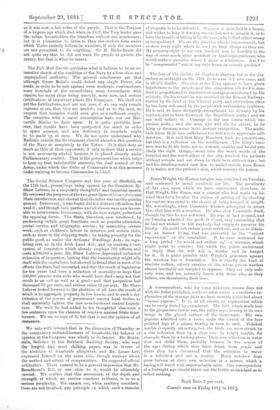A correspondent, who for some unknown reason does not wish
his letter published, sends us what seems a conclusive ex- planation of the strange facts we have recently published about "insane pigeons." It is, at all events, an explanation which can be easily tested by experiment. The bird which made love to the ginger-beer bottle was, the writer says, bowing to its own image in the glazed surface of the stone-ware. His own pigeons, admitted into a room, make the circuit of the four polished legs of a piano, bowing in turn to each. Polished marble is equally attractive, but the birds are more struck by a dim reflection than by a clear one— by bright marble, for example, than by a looking-glass. Their own reflection in water does not strike them, probably because in the course of the ages during which they bare drunk from ponds and rivers they have discovered that the reflection in water is a reflection and not a reality. Many out-door dogs grow furious at their own reflection in a mirror, which a lapdog will watch with imperturbable calm. Our correspondent of a fortnight ago should throw out the bottle so smudged as to reflect nothing.


































 Previous page
Previous page